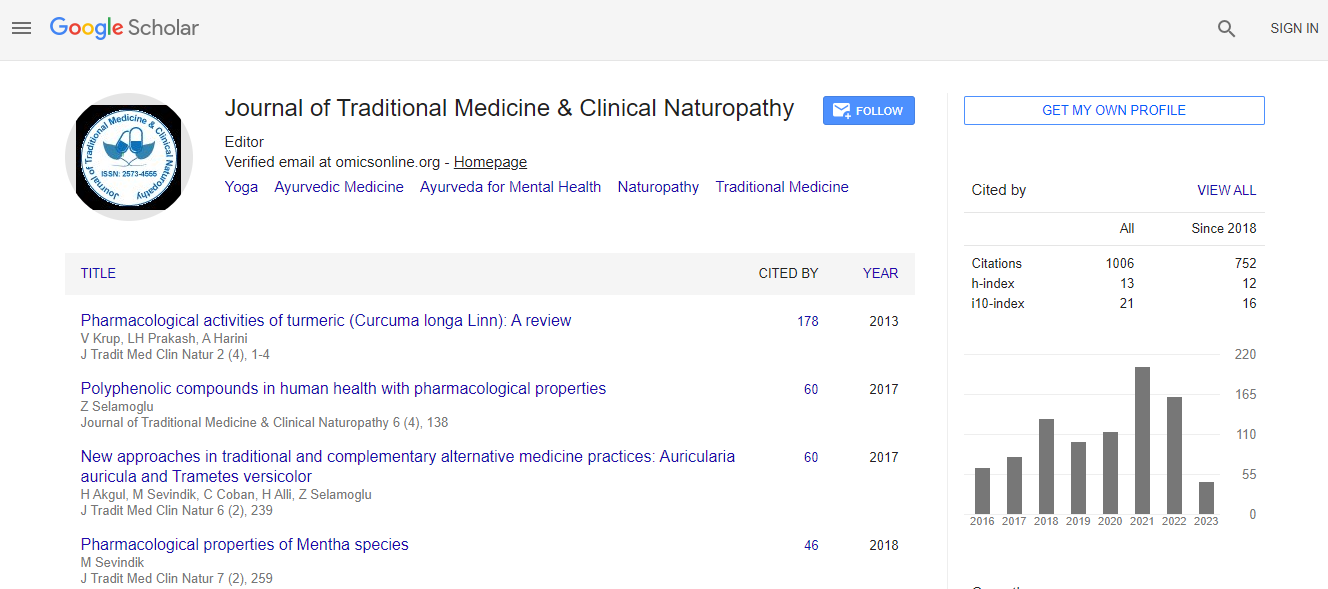Research Article
Incidence of Zeequn- Nafas Shoabi (Bronchial Asthma) in Individuals of Different Temperaments
| Jamal Akhtar1, Abid Ali Ansari2*, Nazema Farhin3 and Rasheed HMA4 | |
| 1Lecturer, Department of Kulliyat, Hakeem Abdul Hameed Unani Medical College, Eidgah road, Dewas (MP), India | |
| 2Professor & Head Department of Kulliyat, HMS, Unani medical College, Sadashivnagar, Tumkur, Karnataka, India | |
| 3Department of Kulliyat, Govt. Nizamia Tibbi College, Hyderabad-(AP), India | |
| 4Professor & Head Department of Kulliyat, Govt. Nizamia Tibbi College, Hyderabad (AP), India | |
| Corresponding Author : | Abid Ali Ansari Professor & Head Department of Kulliyat HMS, Unani medical College Sadashivnagar, Tumkur, Karnataka, India Tel: 08088122328, 08277358327 E-mail: abid_ali1996@yahoo.in |
| Received February 28, 2014; Accepted March 27, 2014; Published March 29, 2014 | |
| Citation: Akhtar J, Ansari AA, Farhin N, Rasheed HMA (2014) Incidence of Zeequn- Nafas Shoabi (Bronchial Asthma) in Individuals of Different Temperaments. J Homeop Ayurv Med 3:147. doi: 10.4172/2167-1206.1000147 | |
| Copyright: © 2014 Akhtar J, et al. This is an open-access article distributed under the terms of the Creative Commons Attribution License, which permits unrestricted use, distribution, and reproduction in any medium, provided the original author and source are credited. | |
Abstract
Aims and objectives: To know the incidence of Zeequn Nafas (Bronchial Asthma) in the patients of different
temperaments at Govt. Nizamia General Hospital and College, Charminar, Hyderabad, Andhra Pradesh.
Methodology: Ninety (90) individuals of both the sexes were included in the study between the ages of 20 to 60 years. The duration of the study was 4 months. The eligible individuals were selected randomly on the basis of clinical symptoms, examinations and who were taking bronchodilator drugs. Then their temperaments were assessed by the pre-structured proforma based on Ajnas-e-Ashra. To assess the amount of fat in the body “Slim Guide Skin fold caliper” was used to measure the skin fold thickness at biceps between the proximal end of radius bone and acromion process. To assess the amount of muscle (Lahm), mid upper arm circumference is measured with tailors tape. Lastly on the basis of total score of Ajnas-e-Ashra (10 determinants), a particular Mizaj was assigned to the patient.
Results: The study revealed that 40% have Balghami (Phlegmatic) temperament, 34% have Damvi temperament (Sanguineous) temperament followed by 15 % in Safravi (Choleric) and lowest in Saudavi (Melancholic) individuals respectively.
Conclusion: On the basis of above results it can be concluded that this disease is more common in Balghami Mizaj persons Females are found to be more prone to develop this disease.

 Spanish
Spanish  Chinese
Chinese  Russian
Russian  German
German  French
French  Japanese
Japanese  Portuguese
Portuguese  Hindi
Hindi 
